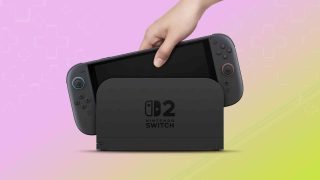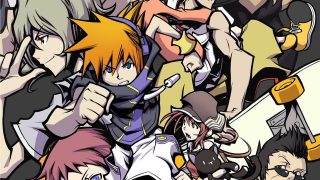There are few memories that give me as much joy as the summer days I’d spend with my cousins when I was younger, hands tightly gripped around N64 controllers as we raced, pummeled and laughed through the hours. Super Smash Bros. is definitely the game I remember playing the most, though other multiplayer classics like Mario Kart 64 and some lesser-known titles like Beetle Adventure Racing! were also favorites of ours. At home, I’d never had any real experience with video games aside from watching my father play on his PlayStation and Sega Saturn. While the GameCube was the first console I ever owned, I owe a lot to the Nintendo 64, as it was the catalyst for my love for Nintendo – and video games, in general – to this day.
In celebration of the 20th anniversary of its launch in Japan, I’ll be looking back at the history of the Nintendo 64, some of its most beloved games and how its existence shaped the course of both the Big N and the game industry as a whole going forward.
Some history
Following its success with both the NES and SNES in the ’80s and early ’90s, Nintendo was pressured by competition from both rivals Sega and Sony to develop a product that would maintain the company’s market dominance. Silicon Graphics, Inc., a specializer in 3D graphics and computing, approached both Sega and Nintendo with a prototype of a video game system. While it initially impressed both companies, Sega’s engineers later found a number of perceived problems with the hardware. Eventually, these issues and Nintendo’s larger business appeal led to Silicon Graphics choosing Nintendo as its partner.
The prototype N64 was revealed to the public in late 1994, showing off its logo (then called the Nintendo Ultra 64), design and Nintendo’s decision to stick with ROM cartridges in lieu of using CD-ROM. The finished product was finally shown in playable form in late 1995 at the Shoshinkai Software Exhibition in Japan. In contrast to their previous consoles, the NES and SNES, Nintendo aimed for a unified name across all regions. Thus, the “Ultra” was dropped from the title and the system became known universally as the Nintendo 64.
After much anticipation, the console was finally released in Japan on June 23rd, 1996 and later in North America on September 26th, 1996 at the price of $199.99. Those in the United States who picked up the console at launch were given just two options for games: Super Mario 64 and Pilotwings 64. Though the selection was small and controversy was certain, Nintendo was confident in the decision. “We’re convinced that a few great games at launch are more important than great games mixed in with a lot of dogs,” said Nintendo of America chairman Howard Lincoln in the years leading up to the release.

Launching a revolution
The Nintendo 64 proudly owned numerous characteristics that set it apart from the crowd – and future consoles. Personally, I felt one of its most memorable features was the incredible diversity of colors and special editions in which it was available. Outside of its standard black, the Nintendo 64 was eventually released in a spectrum of different shades and hues, including fire orange, watermelon pink, jungle green and ice blue.

Another of the Nintendo 64’s many defining characteristics was its controller. While on the surface quite unusual, the device was the first home console to use an analog stick as its primary method of control. Side-lining the long-known D-pad in favor of the stick was a move that was certainly risky for Nintendo, but it proved well worth the gamble. Where the D-pad provided only four directions of control, the analog stick allowed gamers to interact and maneuver around 3D worlds in ways never before possible.

The controller wasn’t the only element of the N64 to revolutionize the way people played games. Super Mario 64, one of the console’s mere two launch titles, emphasized the importance of exploration and dismissed traditional linearity in level design. Whereas previous Mario titles had gamers moving from left to right to reach a goal, Super Mario 64’s environments were both wide and open, with goals located in different areas throughout. This formula continued with several other titles, including The Legend of Zelda: Ocarina of Time, Donkey Kong 64 and the Rare favorite Banjo-Kazooie.
Other games like Diddy Kong Racing, Goldeneye 007, Mario Party and Super Smash Bros. delivered multiplayer experiences gamers had never seen on a home console before, providing the ability for up to four players to participate in balls-to-the-wall party fun. Today, the N64 is lauded for its multiplayer aspects, with many even considering it the best multiplayer console of all time. Even now, my friends and I find ourselves reaching for the N64 Virtual Console games on my Wii and Wii U – it’s an experience that hasn’t quite been matched yet by succeeding consoles.

There was a certain magic about the Nintendo 64 as a kid, as it was able to achieve things I then thought were impossible. Super Smash Bros. united famous characters from across the Nintendoverse to duke it out for glory. Pokémon Stadium and Pokémon Stadium 2 brought my Game Boy Pokémon to life on the TV screen with 3D models. Though not impressive by any means now that Pokémon X and Y has made 3D models the standard, as a child, it was absolutely mind-blowing. Several well known series also received interesting new takes, with Paper Mario bringing story-based RPG elements to the platforming Mario franchise, and The Legend of Zelda: Majora’s Mask taking the tale of Link to dark, almost haunting new territory.
While the Nintendo 64 has been commonly criticized for its lack of games, there’s no question that quality made up for quantity for the 20-year-old console. Even without a vast library of titles, the N64 is still considered by a good chunk of the gaming community to be one of the greatest consoles in history.

A lasting legacy
Games like The Legend of Zelda: Ocarina of Time, Super Mario 64 and GoldenEye 007 remain highly influential, with the former two known as some of the best games of all time. The Nintendo 64 paved the way for modern gaming, with GoldenEye 007 arguably serving as the precursor for today’s shooters, and its collection of platformers helping to shape 3D gaming as we know it. Several titles launched on the system have set the standard for their series, and many franchises – like Mario Party – that had their start there continue releases all these years later.
Happy anniversary, Nintendo 64. I salute you with my bright red controller, worn and loose from years of play – a tribute to the countless days and nights wisely spent with you. You really are one-of-a-kind.



